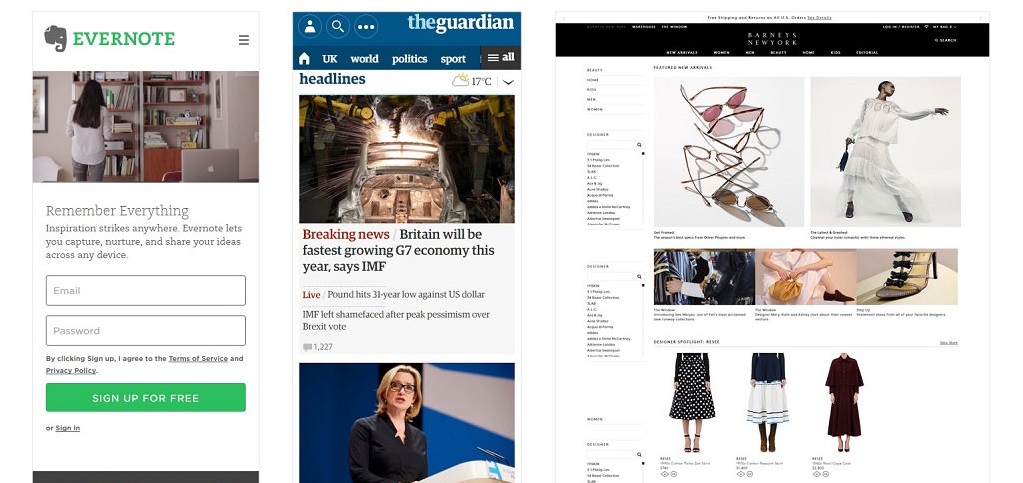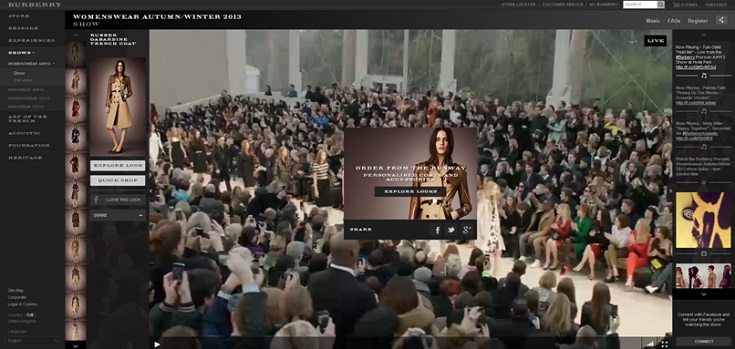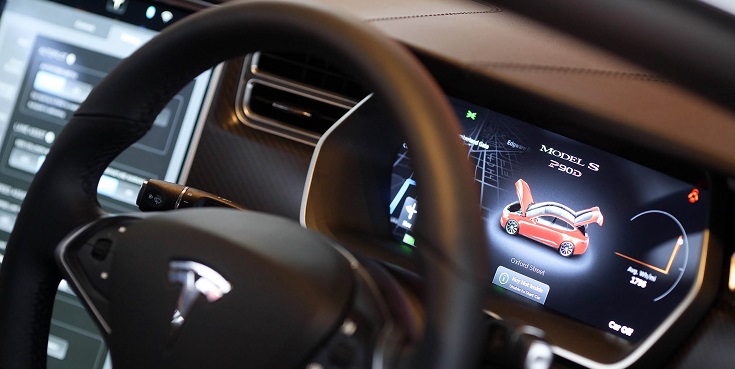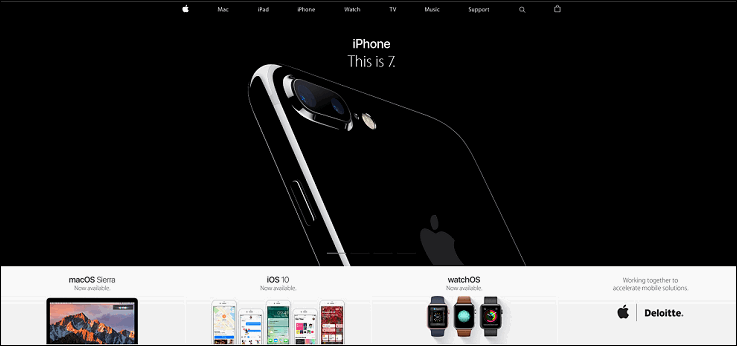Liquid expectations
The rising use of digital technologies as a primary means of interacting with and serving users has undoubtedly opened up a wealth of opportunity for many organisations, though at the same time it’s introduced important challenges too. Crucially, not only do audiences today expect key information and services to be delivered in a digital format as standard, but they are also less likely to consider an organisation’s industry or size when assessing the value being delivered – a phenomenon consultancy firm Accenture has termed ‘liquid expectations’.
Across the board, this has changed the way digital experiences are assessed, with organisations that operate in sectors which are typically slower to be exposed to change (including membership, manufacturing and the public sector) now being judged against the best-of-breed experiences emerging in areas such as ecommerce, leisure & tourism, and social networking. Consequently, even established organisations with loyal audiences may soon find their users becoming unwilling to put up with overly-physical processes, or legacy software that’s simply no longer fit-for-purpose, regardless of it being previously accepted as the status quo…
The business case for Customer Experience (CX)
Beyond serving your users effectively there are a number of business benefits to be gained from investing in the experience being delivered through your digital channels, as well as the processes and infrastructure underpinning it. Indeed, good CX can directly support improved business performance by allowing you to compete in areas other than cost, and so freeing you from a ‘race to the bottom’ where margins and even product quality are sacrificed to achieve the lowest possible price. Instead, by using customer experience as a differentiator, you can drive higher-value conversions and, importantly, long-term loyalty – enabling you to grow revenue and profitability in a way that’s both measurable and sustainable.
Fact: It’s actually predicted that by 2020 customer experience will overtake price and product as the most powerful brand differentiator out there, with 89% of businesses expected to compete mainly on CX in the near future and 86% of customers willing to pay more for a better user experience.
Top trends
With statistics like these you can’t not be convinced of the value of an exceptional experience, but where should you be looking to inspire the development of your own customer experiences? Here are some of the top trends we’ve seen:
Mobile/multi-channel
Now, I know you don’t need me to tell you how important mobile is to modern consumers but with over 2.6 billion smartphone users worldwide, and 65% of all digital media time coming from mobile devices, this is clearly an area that all organisations must consider when planning their digital strategy. At the very least, it’s crucial that your sites and applications be optimised for the devices – especially when they may be compared to high-quality mobile and responsive sites from brands such as Evernote, the Guardian and Barneys.

However, many organisations are now going further in their quest for a joined-up multi-channel journey, particularly in the retail space. Burberry, for example, has recently been named best multi-channel retailer, thanks to its strong mobile commerce platform and initiatives that include providing customer service representatives with iPads to increase in-store sales. John Lewis, too, is making the most of both digital and traditional channels, with its now infamous seasonal television adverts supported by integrated social media campaigns and in-store product promotions. And, as consumers become used to seamlessly moving between different channels in this way when shopping for B2C goods, B2B organisations (as well as B2C service providers) will need to ensure their own multi-channel strategies offer the same levels of ease, usefulness and enjoyment in order to keep up.

Personalisation
In addition to expecting to be able to access content and services wherever and whenever they require it, today’s users also want this information to be increasingly tailored to their specific needs, preferences and behaviours. And while targeting and personalisation was cited as the top digital-related priority for organisations in Econsultancy’s 2016 Digital Trends report, putting this strategy into practice can prove challenging, with 62% of marketers reporting that they do not have the right technology in place to deliver a personalised experience.
Like mobile and multi-channel, personalisation efforts can also vary wildly – from using explicit data such as registered users’ names and stated preferences through to more sophisticated strategies based on past behaviour and contextual triggers such as those employed by organisations like Amazon, Boots and Netflix, while leaders in this space are taking their efforts further still. Stagecoach, for example, won “Best use of Contextual Intelligence” in this year’s Sitecore Experience Awards as a result of the way it leverages explicit and implicit customer data from a variety of systems and sources, such as on-site behaviour, loyalty, customer relationship management data, purchase behaviour and real-time location.

Customer service capabilities
As mentioned in the introduction, ensuring high levels of loyalty is vital if you want to drive long-term success, and providing good customer service a key means of achieving this. And, as in all other walks of life, users are more and more turning to digital channels for their customer service needs, with Forrester reporting that web and mobile self-service interactions have overtaken all other channels, and are still continuing to grow in popularity.
It’s important to consider, therefore, how you can leverage these channels to help your users fulfil their specific needs and requirements – although you can still get inspiration from customer services leaders in a range of different industries. Live chat capabilities, for example, are used to great effect by many B2B organisations, while online communities can help support effective self-service and knowledge-sharing in a variety of different situations. Providing online video advice and tutorials can also have a big impact on customer satisfaction, as evidenced by the tactics employed by brands ranging from Barclays bank to Chanel.

Obviously, though, you’ll want to ensure that your customer service channels remain a last resort, so make sure any key customer journeys are optimised to be as smooth as possible – although you may not be able to take this as far as brands such as Tesla, which pushes software updates directly to its vehicles to minimise customer effort.

Ease of use
Whatever elements go into your overarching customer experience strategy, though, your users should remain at the very heart of it. No matter what industry you operate in, technological advances have very likely given your audience greater power and control than ever before – so you need to make it as easy as possible for them to achieve key tasks and goals, or risk losing out to more digitally-savvy competitors.
However, as shown in the other examples given in this post, you’re no longer just competing against organisations from the same industry as you, but from right across the digital space. The experiences being delivered by Apple, Google, Amazon and other CX leaders have set the standard extremely high – so be sure that every element of your digital ecosystem is optimised and integrated to ensure you’re able to meet growing user expectations.

Next steps
Of course, it’s unlikely that you’ll be able or even want to address all of these considerations at once – but there is nevertheless an imperative to act swiftly, as failure to do so will leave the way clear for more nimble and innovative organisations to steal a march. And if you start off on the back foot in this way you risk forever struggling simply to catch up, never mind lead the way in customer experience.
It’s vital, therefore, that you craft a CX strategy that will deliver maximum value as quickly as possible, while managing the expectations of your audience along the way. This begins by taking the time to listen to your audience – as well as looking closely at what’s happening in the wider digital landscape – so that you can be certain your plan addresses the highest-priority requirements of both your business and your users at the outset. It’s also important to make sure you review progress and learn as you go, adapting your plans as needed in response to the outcomes of previous initiatives, or any emerging threats or opportunities you observe. It’s only with this kind of coordinated approach, based on qualitative research, that you’ll be able to tap into the full potential of these trends, and make them work both for your users and your business.
At Box UK we have a strong team of bespoke software consultants with more than two decades of experience in bespoke software development and user-centred design. If you’re interested in finding out more about how we can help you, contact us on +44 (0)20 7439 1900 or email info@boxuk.com.

